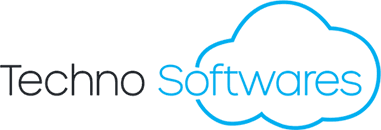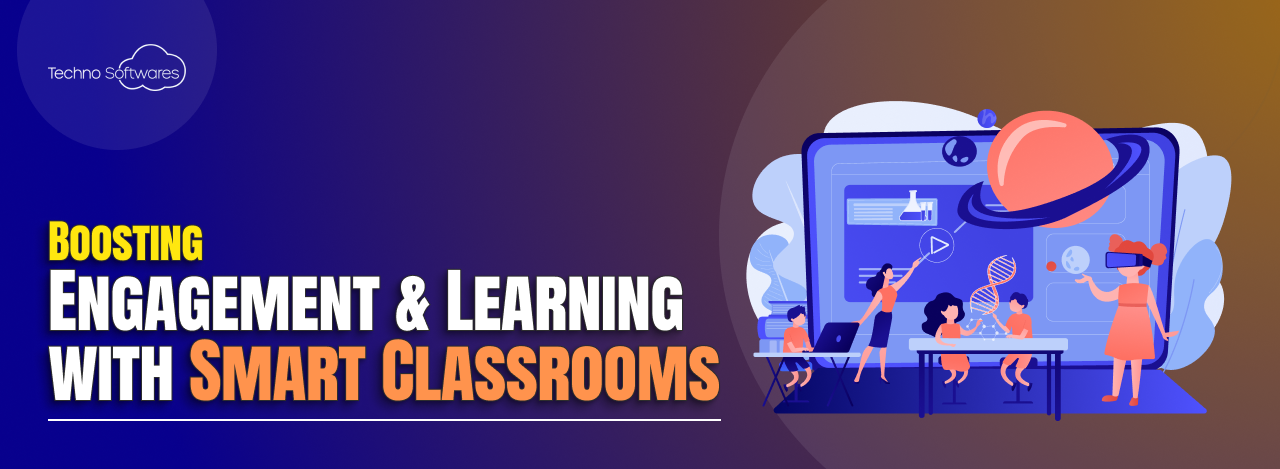How Smart Classrooms Enhance Student Engagement and Learning Outcomes
In recent years, the concept of smart classrooms has gained significant traction in educational institutions around the globe. As we delve into this innovative approach to learning, we find that smart classrooms are designed to enhance student engagement through the integration of advanced technologies. These environments are not merely about having the latest gadgets; they represent a fundamental shift in how we perceive teaching and learning.
By fostering interactive and collaborative experiences, smart classrooms aim to create a more dynamic educational atmosphere that resonates with today’s tech-savvy students. As we explore the essence of smart classrooms, it becomes evident that student engagement is at the heart of this transformation. Traditional teaching methods often struggle to capture the attention of learners who are accustomed to the fast-paced, interactive nature of digital media.
Smart classrooms address this challenge by incorporating tools and resources that encourage active participation. From interactive whiteboards to virtual reality experiences, these technologies not only make learning more enjoyable but also facilitate deeper understanding and retention of knowledge. In this article, we will examine the myriad benefits of smart classrooms, particularly how they enhance student learning outcomes and engagement.
Key Takeaways
- Smart classrooms enhance student engagement through interactive learning tools and digital resources.
- Smart classrooms improve student learning outcomes by promoting active participation and personalized learning experiences.
- Technology plays a crucial role in smart classrooms by providing access to educational apps, online resources, and collaborative platforms.
- Techno softwares can enhance smart classroom integration by offering features like virtual reality simulations, interactive whiteboards, and real-time student assessment tools.
- Techno softwares for smart classrooms include features such as content management systems, learning analytics, and student progress tracking.
The Benefits of Smart Classrooms for Student Learning Outcomes
The advantages of smart classrooms extend far beyond mere engagement; they significantly impact student learning outcomes as well. Research has shown that when students are actively involved in their learning process, they tend to perform better academically. Smart classrooms provide an array of resources that cater to diverse learning styles, allowing us to tailor our teaching methods to meet the needs of every student.
This personalized approach fosters a sense of ownership over one’s education, motivating students to take charge of their learning journey. Moreover, smart classrooms facilitate collaboration among students, which is essential for developing critical thinking and problem-solving skills. By utilizing group projects and interactive activities, we can encourage teamwork and communication, skills that are vital in today’s interconnected world.
The use of technology in these settings allows for real-time feedback and assessment, enabling us to identify areas where students may be struggling and adjust our teaching strategies accordingly. Ultimately, the benefits of smart classrooms are profound, as they not only enhance academic performance but also prepare students for future challenges.
The Role of Technology in Smart Classrooms

Technology plays a pivotal role in the functionality and effectiveness of smart classrooms. It serves as the backbone that supports various teaching methodologies and learning activities. By integrating tools such as tablets, laptops, and interactive displays, we create an environment where information is readily accessible and easily shared among students and teachers alike.
This seamless flow of information fosters a collaborative atmosphere that encourages inquiry and exploration. Furthermore, technology enables us to incorporate multimedia resources into our lessons, making complex concepts more digestible for students. For instance, we can use videos, simulations, and gamified learning experiences to illustrate difficult topics in a more engaging manner.
This not only captures students’ attention but also caters to different learning preferences, ensuring that everyone has the opportunity to grasp the material effectively. As we continue to embrace technology in education, it becomes increasingly clear that it is an indispensable tool for enhancing the learning experience in smart classrooms.
How Techno Softwares Can Enhance Smart Classroom Integration
As we navigate the landscape of smart classrooms, it is essential to recognize the role of specialized software solutions—commonly referred to as techno softwares—in enhancing classroom integration. These applications are designed to streamline various aspects of teaching and learning, making it easier for educators to manage their classrooms effectively. By providing tools for lesson planning, assessment, and communication, techno softwares empower us to create a more organized and efficient learning environment.
One of the key advantages of techno softwares is their ability to facilitate real-time collaboration among students and teachers. With features such as shared documents and discussion boards, we can foster a sense of community within the classroom, encouraging students to engage with one another and share their ideas freely. Additionally, these platforms often come equipped with analytics tools that allow us to track student progress and identify areas for improvement.
By leveraging data-driven insights, we can make informed decisions about our teaching strategies and better support our students’ learning needs.
Features of Techno Softwares for Smart Classrooms
Techno softwares come equipped with a variety of features designed specifically for smart classroom environments. One notable feature is the ability to create interactive lessons that incorporate multimedia elements such as videos, quizzes, and simulations. This not only enhances student engagement but also allows us to present information in a more dynamic way.
By utilizing these tools, we can create lessons that are not only informative but also enjoyable for our students. Another important feature is the integration of assessment tools that enable us to evaluate student performance in real time. With options for formative assessments such as quizzes and polls, we can gauge understanding as lessons progress and adjust our teaching accordingly.
Additionally, many techno softwares offer customizable dashboards that provide insights into individual student performance, allowing us to tailor our support based on specific needs. These features collectively contribute to a more effective teaching and learning experience in smart classrooms.
Integrating Techno Softwares into Classroom Curriculum
Integrating techno softwares into our classroom curriculum requires careful planning and consideration. To maximize their potential, we must align these tools with our educational objectives and ensure they complement our existing teaching methods. This process begins with identifying specific learning goals and determining how techno softwares can enhance those objectives.
By doing so, we can create a cohesive curriculum that leverages technology to support student learning. Moreover, it is essential to involve students in this integration process. By introducing them to the functionalities of techno softwares early on, we empower them to take ownership of their learning experience.
Encouraging students to explore these tools fosters a sense of curiosity and innovation, which can lead to more meaningful engagement with the material. As we integrate techno softwares into our curriculum, we must remain flexible and open to feedback from both students and fellow educators, allowing us to refine our approach continuously.
Training and Support for Teachers Using Techno Softwares
For successful implementation of techno softwares in smart classrooms, adequate training and support for teachers are crucial. As educators, we must feel confident in our ability to utilize these tools effectively in our teaching practices. Professional development programs focused on technology integration can provide us with the necessary skills and knowledge to navigate these platforms successfully.
Additionally, ongoing support is essential as we adapt to new technologies. Establishing a network of peers who can share best practices and troubleshooting tips can be invaluable in this process. By fostering a culture of collaboration among educators, we can collectively enhance our proficiency with techno softwares and ultimately improve student outcomes in smart classrooms.
The Future of Smart Classrooms and Techno Softwares in Education
Looking ahead, the future of smart classrooms appears promising as technology continues to evolve at an unprecedented pace. We anticipate that advancements in artificial intelligence, virtual reality, and augmented reality will further transform the educational landscape. These innovations have the potential to create even more immersive learning experiences that cater to diverse student needs.
Moreover, as we continue to embrace techno softwares in education, we foresee an increased emphasis on data-driven decision-making. By harnessing analytics tools embedded within these platforms, we can gain deeper insights into student performance and tailor our instructional strategies accordingly. Ultimately, the future of smart classrooms will be characterized by a seamless integration of technology that enhances both teaching practices and student engagement—creating an educational environment where every learner can thrive.
If you are interested in enhancing student engagement and learning outcomes through smart classroom technology, you may also want to explore how Techno Softwares can help you integrate this technology seamlessly. In a related article on their blog, they discuss the importance of access controls and encryption in improving logistics security. By implementing these measures, schools can ensure that their smart classrooms are secure and protected from potential threats. To learn more about how Techno Softwares can assist you in creating a safe and efficient learning environment, check out their article on <a href=’https://technosoftwares.com/blog/how-to-improve-logistics-security-with-access-controls-and-encryption/’>improving logistics security with access controls and encryption.
FAQs
What are smart classrooms?
Smart classrooms are technologically enhanced learning environments that utilize various digital tools and resources to facilitate interactive and engaging learning experiences for students. These tools may include interactive whiteboards, digital projectors, tablets, and educational software.
How do smart classrooms enhance student engagement?
Smart classrooms enhance student engagement by providing interactive and multimedia learning experiences. These technologies allow for more dynamic and personalized learning, which can capture students’ attention and make learning more enjoyable and effective.
What are the benefits of smart classrooms for learning outcomes?
Smart classrooms can improve learning outcomes by providing students with access to a wide range of digital resources and tools that can support their learning. These technologies can also help teachers to better assess student progress and provide personalized support, leading to improved academic performance.
How can Techno Softwares help integrate smart classroom technology?
Techno Softwares offers a range of educational technology solutions that can help schools and institutions integrate smart classroom technology. This includes educational software, learning management systems, and other digital tools that can enhance the learning experience for both students and teachers.





